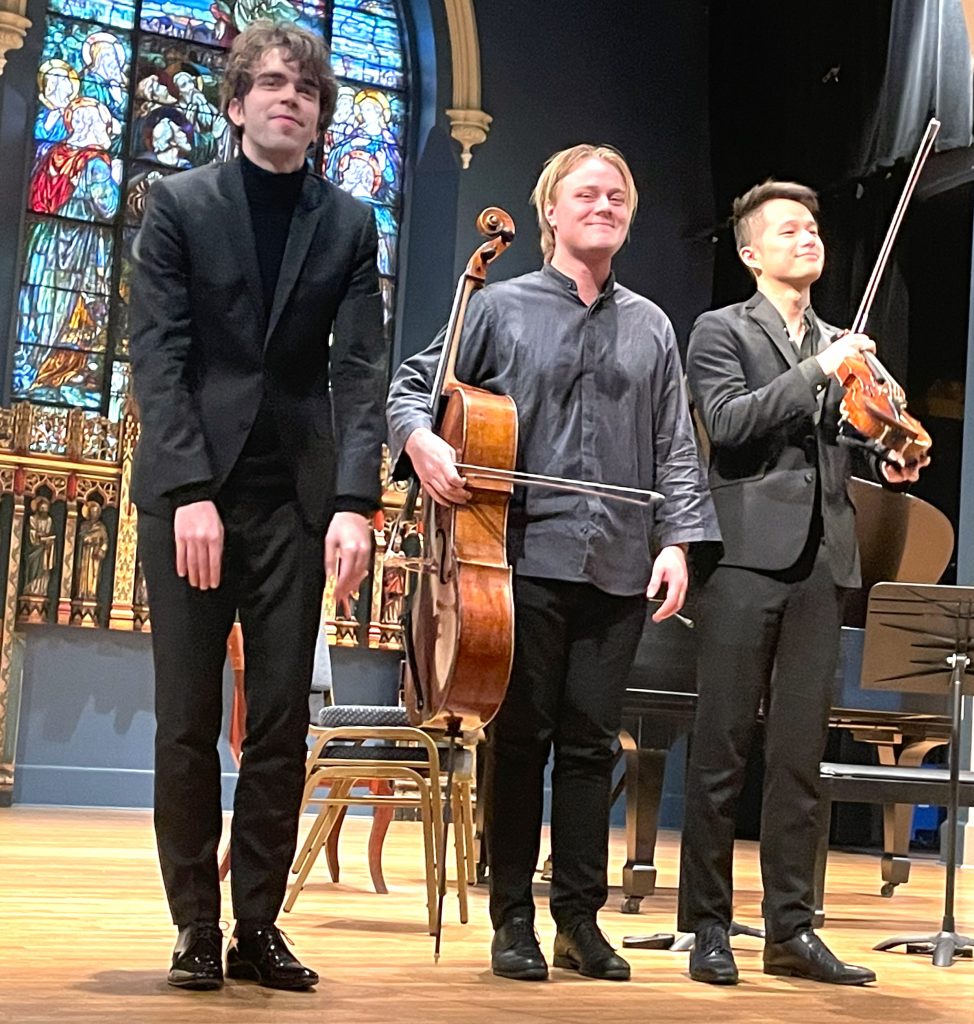
by Kevin T. McEneaney
Last Sunday the Clarion Concert directed by Eugenia Zuckerman presented an extraordinary concert at Saint James Place in Great Barrington.
Tenor Daniel McGrew, who possesses an unusually friendly, warm, spontaneous voice-ambiance, sang Ludwig van Beethoven’s only complete song cycle An die ferne Gelibete, Op. 98 (To the Distant Beloved, 1816) to text by Alois Jeiteles (1794-1858), a noted Austrian poet. In a series of six songs, accompanied on piano by Albert Cano Smit, the lover laments the departure of his beloved, comparing her the Austrian landscape: hills, streams, woods, clouds, and singing birds. The musical motifs of the first five songs reappear in the final sixth song. It was an unusual treat to hear this rarely performed masterpiece, ranked as one of Beethoven’s most impressive effusions, by such an impressive tenor!
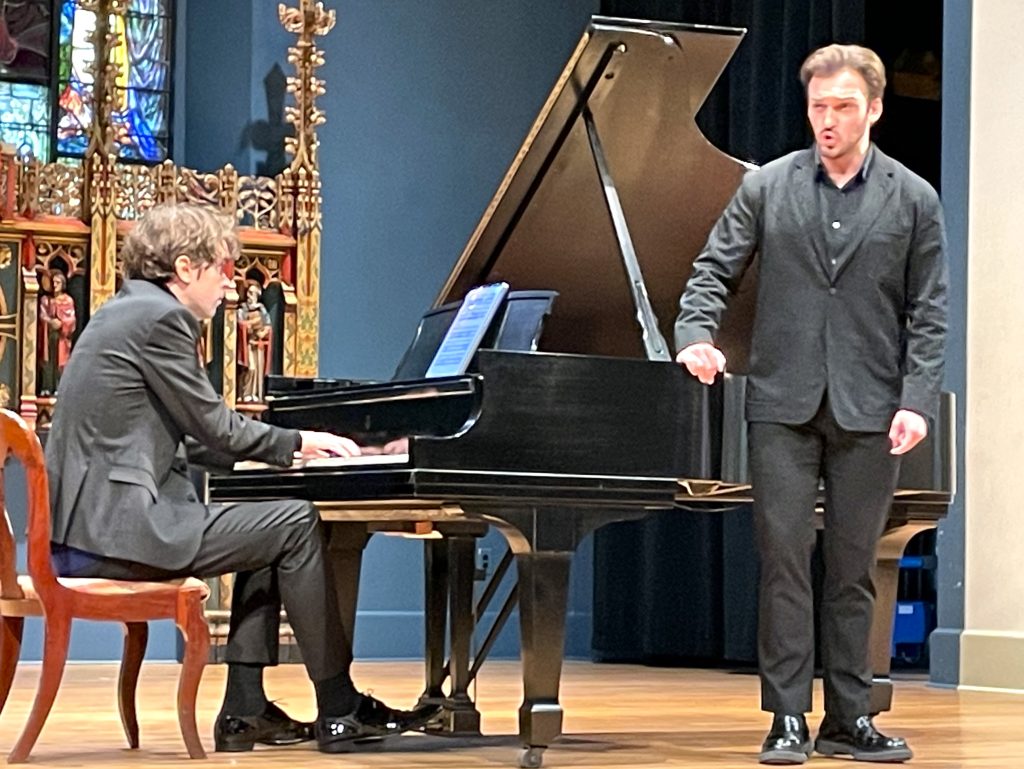
This was followed by two chamber music versions of two songs by the Austrian composer Joseph Marx (1882-1964). “All daily desires” described a pastoral sunset, while “You Are the Garden” compares a garden to the physical body of the beloved. The latter short, ingenious poem may have been influenced by Jeiteles. Both were sung with gentle, nuanced passion by McGrew who possesses usually clear, effortless diction and suave voice projection which the audience fiercely applauded.
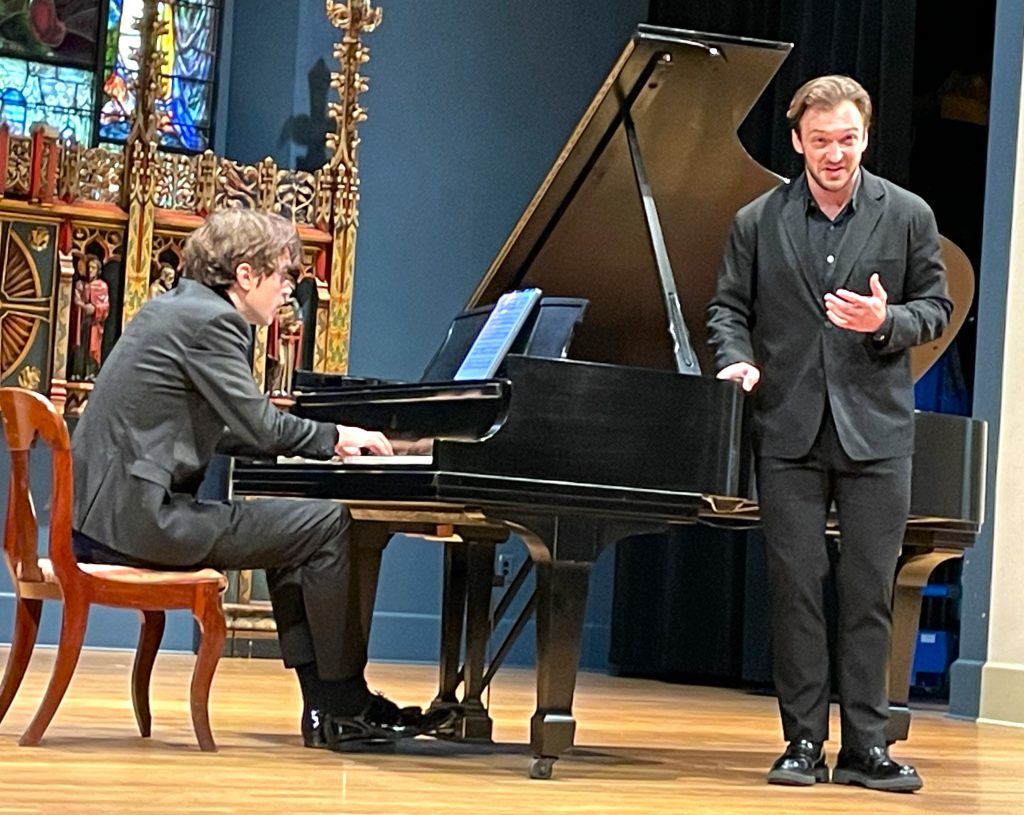
The accompanying trio of violinist Lun Li, cellist Jonathan Swesnen,, and pianist Albert Cano Smit remained to perform Kintsugi, a modern classic, by Salina Fisher (b. 1993) who says she is drawn to this Japanese lacquer ware technique of repairing broken pottery with gold-dust as a metaphor for embracing brokenness. The piano announced the seriousness of the project while the cello lamented, and the violin projected vulnerability, yet they all offered their joyous interpretation of how it felt to be healed and repaired, the metaphor extending to human behavior with regard to sexual intimacy. Influenced by late Debussy and Ravel, the work features musical fragments that eventually coalesce in a repaired continuity which celebrates harmonious memories. This composition is so moving and effective it offers a universal moral about the human condition, that even after great tragedy humanity can repair itself into a more harmonious and salubrious identity, even after great trauma. After hearing this work for the first time, I now understood why this work, performed with such gentle sensitivity by this piano trio, is an international masterpiece.
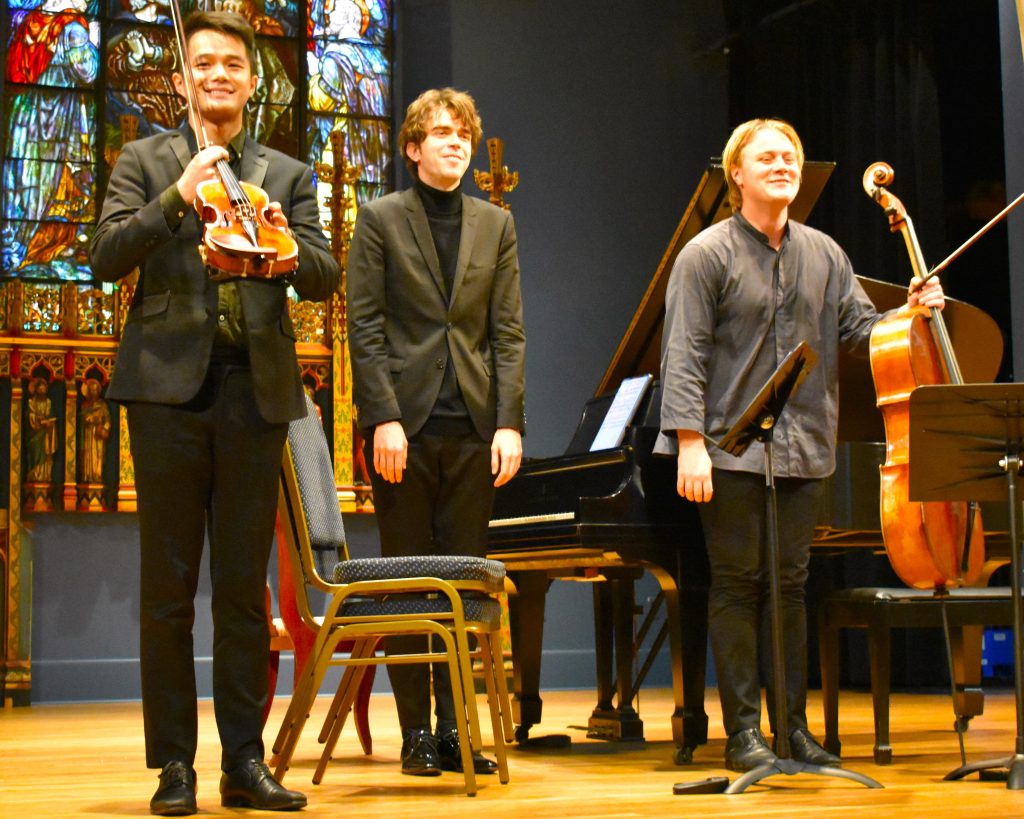
There was much diversity in the Romantic movement, yet one might say that there were two wings to it: the sociological and autobiographical. While some figures like Berlioz, Rossini, Mozart, Chopin, Rubenstein, and Liszt were able to combine the personal with the public, others like Mendelssohn, Paganini, Field, Schubert, and Schumann provided a more autobiographical, introspective angle.
Liszt was present at Schumann’s house for the final rehearsal of Schumann’s famous Piano Trio in D Minor, No. 1, Op. 63 (1847). According to Martin Geck’s biography, Liszt did not much care for it; he thought it attractive, but too Neo-classically conventional. When played well, as it was in this extraordinary performance, it is truly astonishing work, yet autobiographically opaque.
Judith Cherniak in Schumann: The Faces and the Masks suggests that “A demonic scherzo picks up the rhythmic second theme of the first movement, driving it to excess, as if in memory of the frantic sleigh rides of the Russian tour.” (p. 201). I think this a cogent observation, yet I propose the rhythmic structure of the whole work portrays the varied pacing of an exciting troika ride with the exploding finale being the mad rush of the return “home.” Liszt was likely disappointed that there was no broader sociological perspective in the work.
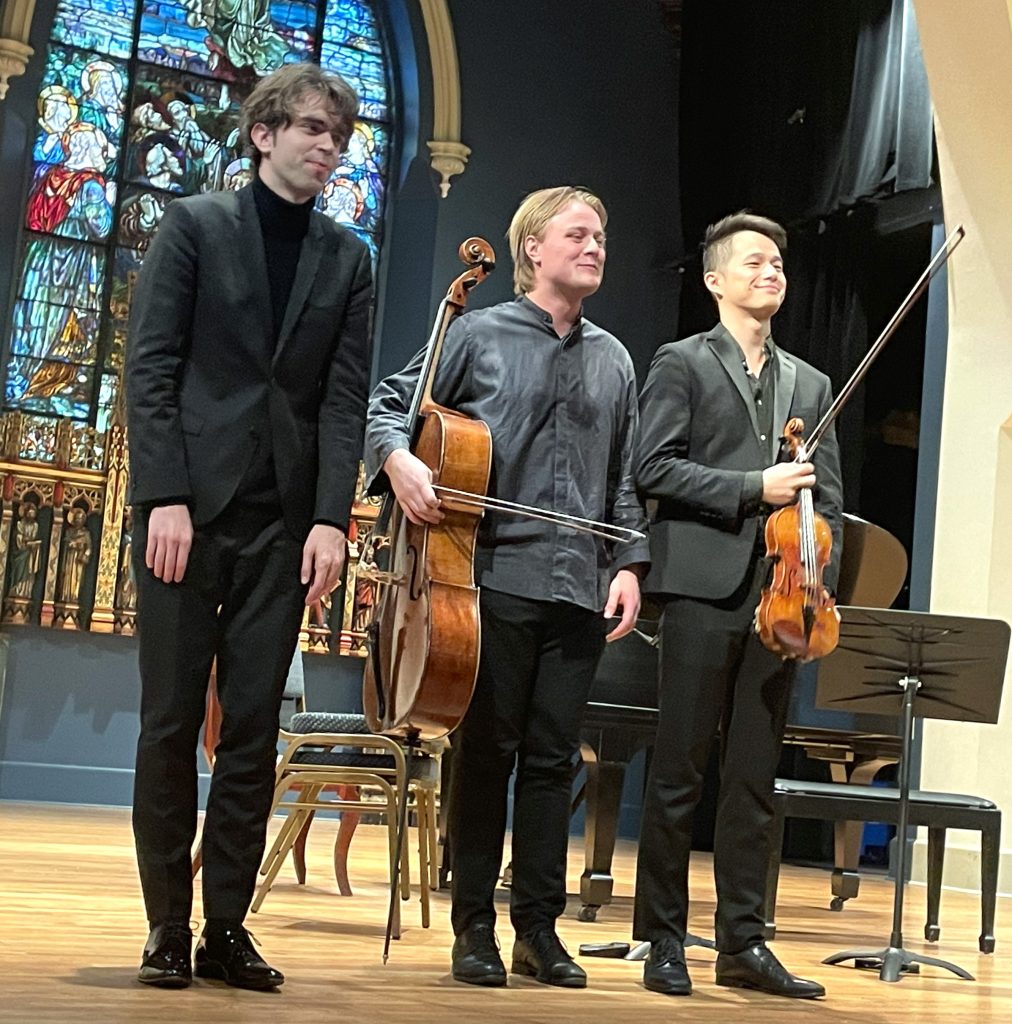
In this trio the piano represents the sound of the horse’s hooves, whether trotting or slow pacing. Albert Cano Smit on piano was especially effective in the thundering passages. Jonathan Swesnen on cello describes Robert’s emotions and wry reactions, while Lun Li on violin limned Clara Weick’s experience, especially Clara’s joyous high shrieks ferociously played on the violin’s bridge. The bemused eye-contact between Swesnen and Li even imitated the excited, ecstatic interplay of intimate reactions between Robert and Clara, which transported the audience into thunderous ovation.
Neither I, nor you, will ever experience a nineteenth-century winter troika excursion, yet I think that I would likely prefer this musical version than the cold reality, thus validating the Romantic autobiographical approach to certain aspects of life.
This concert was indelibly printed in the memories of all who attended! If you see the names of these artists playing or sing anywhere, you will not be disappointed in what their future performances will offer!